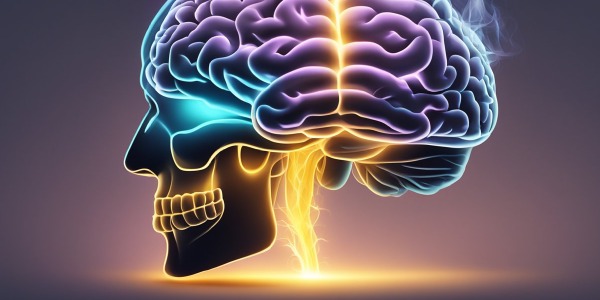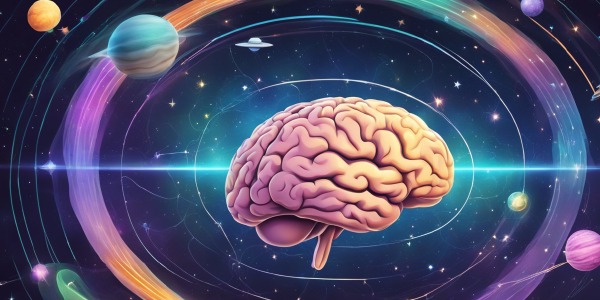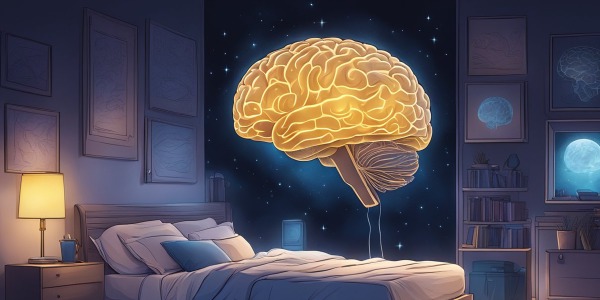The Detrimental Effects of Multitasking on Learning and Memory Retention: A Closer Look at Cognitive Strain
The ubiquity of digital devices and the perpetual push for productivity have ingrained the practice of multitasking into our daily lives. While juggling multiple activities might seem beneficial for efficiency, it’s essential to scrutinize how this behavior affects learning and memory retention.
The human brain, with its immense capabilities, still has limitations in processing conflicting streams of information simultaneously.

Recent studies suggest that the distraction induced by multitasking can significantly impact cognitive functions central to learning. When you attempt to engage in numerous tasks at once, your brain divides its attention, leading to a reduction in the quality of work and an increase in the time taken to complete tasks.
Multitasking does not only alter the way you work but also how effectively you learn and remember information over time.
Key Takeaways
- Multitasking can negatively affect learning quality and memory retention.
- Continuous partial attention during multitasking reduces cognitive performance.
- Technological advances increase multitasking but may hinder educational outcomes.
Defining Multitasking

Multitasking involves managing more than one task at a time. It often requires you to switch your focus from one activity to another or balance multiple tasks simultaneously.
Conceptual Overview of Multitasking
When you multitask, you engage in the simultaneous or alternating handling of multiple tasks. It’s a cognitive juggling act where your brain exerts cognitive control to manage the demands of several activities.
Despite the common belief that multitasking increases efficiency, research suggests it can impair task performance due to the splitting of attentional resources.
- Dual-task interference: Occurs when two tasks are performed at the same time, often leading to a decline in performance of one or both tasks.
- Concurrent multitasking: Involves performing multiple tasks at once, like listening to a lecture while writing notes.
- Cognitive control: Your brain’s ability to coordinate and allocate attention to different tasks.
Types of Multitasking
In your daily life, you might come across two main types of multitasking:
- Sequential multitasking: You switch between tasks quickly, giving the impression of parallel activity. For example, replying to an email and then immediately returning to a report you were writing.
- Continuous multitasking: Involves the overlap of tasks. This might look like listening to a podcast while sorting data on a spreadsheet.
multitasking can challenge your brain’s cognitive control mechanisms, leading you to take longer to complete tasks or make more errors.
Multitasking in Learning Environments

In academic settings, multitasking can hinder your ability to understand and recall information. By dividing your focus, you might compromise the depth of your learning experience.
Impact on Lectures and Note-Taking
When you multitask during lectures, your ability to process and retain information can suffer. Studies show that if you try to write notes while engaging with other distractions, important lecture details often go unrecorded or misunderstood.
Key Points:
- Note-taking effectiveness decreases with multitasking.
- Critical information is often missed during divided attention.
Multitasking During Homework
Balancing homework with other activities, like social media browsing, can lead to half-hearted learning efforts and partial understanding. A study revealed that undergraduate students who multitask during homework have lower performance outcomes.
Statistics:
- Homework completion rates drop when multitasking.
- Quality of work deteriorates under divided focus.
Media Multitasking Among Students
You, as a digital native, may often indulge in media multitasking, combining study with digital media consumption. This division of attention can result in attention lapses, reducing the quality of multimedia learning content processing.
Effects:
- Increased attention lapses.
- Reduced comprehension of multimedia learning content.
In-Class Laptop Usage
In-class laptop use for purposes other than note-taking, such as browsing the internet, can be disruptive. It not only affects your learning outcomes but may also distract fellow university students, creating a less effective learning environment.
Observations:
- Laptop usage for non-educational purposes correlates with attention lapses.
- Fellow students’ learning experience is also compromised.
Cognitive Effects of Multitasking

When you multitask, your brain’s ability to process and retain information is affected. Understanding how multitasking influences cognitive functions can help you optimize your learning and memory retention.
Attention and Cognitive Load
Your attention is a crucial cognitive resource that becomes divided when you multitask. Engaging in multiple activities simultaneously increases your cognitive load—the total amount of mental effort being used in your working memory.
This heightened load can lead to decreased performance, as your brain struggles to allocate attention effectively between tasks.
- Divided Attention: Trying to focus on several tasks at once leads to partial attention for each, reducing the quality of cognitive engagement.
- Increased Cognitive Load: Engaging in dual-task performance stretches your cognitive resources thin.
Effects on Memory and Retention
Multitasking can negatively impact how you encode information into your long-term memory. When your attention is split, the process of encoding information becomes less efficient, leading to poor memory retention.
- Disturbed Encoding: Without full attention, your brain encodes information less effectively, making it harder to retrieve later.
- Diminished Retention: Juggling tasks can prevent information from solidifying in memory, dropping the likelihood of retention.
Multitasking and Cognitive Processes
The quality of your cognitive processes, including your working memory constructs, suffers when you multitask. This can lead to errors and a lack of depth in understanding the content you are trying to learn or retain.
- Strained Working Memory: Work-intensive tasks can overburden your working memory when multitasking.
- Compromised Content Retention: Multitasking disrupts the ability to hold onto and understand complex information.
Executive Control and Task Switching
Your executive control is responsible for managing the various cognitive processes. Multitasking requires frequent task switching, which comes with inherent switch costs that can slow you down and reduce your efficiency.
- Switch Costs: Changing tasks requires a mental reshuffle, using up time and cognitive resources.
- Impaired Executive Control: Constantly shifting focus tests the limits of your executive control, often leading to decreased task performance.
Technological Impacts on Multitasking

Advancements in technology have revolutionized how you manage tasks, but they’ve also introduced new challenges to learning and memory retention.
ICT and Digital Device Experience
Information and Communication Technology (ICT) has become integral to your daily routine. Your ability to access an abundance of information at a moment’s notice often leads to task-switching and digital multitasking.
While you might feel productive flipping between various digital tasks, your concentration and memory retention may suffer.
- Presence of ICT in Learning: You often use ICT for research or as educational tools, but multitasking between these platforms can dilute your focus.
- Experience with Digital Devices: Constant notifications from your devices can interrupt learning sessions, potentially leading to fragmented memory retention.
Social Media and Multitasking
Social media platforms are designed to grab and keep your attention. They offer a stream of new content that encourages users to check updates frequently, which can intrude on learning.
- Distraction During Learning: Using social media during study periods can lead to shorter attention spans and less effective memorization.
- In-Class Impacts:
- When you use social media during lectures, it can not only affect your own learning but also potentially disrupt others.
Instant Messaging and Texting
The convenience of instant messaging and texting means you’re always reachable, but it also means that you’re prone to interruptions during learning activities.
- Texting and Cognitive Load: Juggling conversation threads can increase cognitive load, leaving less mental capacity for grasping new information.
- Mobile Phones and Education: Studies have shown that having a mobile phone within sight, even if you’re not using it, might reduce your available cognitive capacity.
Pedagogical Considerations

In designing learning experiences, it’s important for educators to understand how multitasking can impede memory retention and distract from learning goals.
Designing Multimedia Learning
When creating multimedia learning materials, you should ensure that they are not overly complex. Your aim is to facilitate cognitive processing, not to overload it.
For example:
| Do’s | Don’ts |
|---|---|
| Use kernels of information that build on each other. | Introduce too many ideas at once. |
| Provide clear, concise instructions. | Clutter interfaces with excessive media types. |
| Utilize visuals and audios that directly support the text. | Add unrelated decorative visuals or sounds. |
Graphics, videos, and texts must complement each other to reinforce the learning material.
Enhancing Learning Activities
To boost learning activities, consider integrating techniques that center focus and minimize distractions. Here’s a quick guide:
- Chunk information: Break down information into smaller, manageable pieces.
- Active engagement: Use quizzes and interactive tasks to maintain attention.
- Frequent feedback: Offer immediate feedback to keep learners on the right track and engaged.
Foster an environment where learners feel compelled to concentrate on the task at hand fully.
Addressing the Attention Economy
In the attention economy, where distractions are rampant, your learning activities must be more engaging than potential distractions. Strategies include:
- Limiting choices: Present a few strong options rather than many.
- Setting clear goals: Ensure that each learning activity has a distinct and achievable aim.
- Encouraging self-regulation: Teach learners to set personal goals and monitor their progress.
By understanding and leveraging the dynamics of the attention economy, you make your learning activities more compelling and keep students' focus where it belongs: on learning.
Effects of Multitasking on Student Outcomes

Multitasking during study sessions may lead to suboptimal learning and weaker academic outcomes. You’ll find that it can significantly affect your exam performance and GPA, alter the quality of your academic work, and even influence your motivation and creative capacities.
Exam Performance and Grade Point Average
Multitasking while studying can lower your exam scores. Research indicates that students who frequently switch between tasks tend to retain less information, which translates to poorer exam performance. A study focusing on student behaviors found a negative correlation between frequent multitasking and GPA. Students who are able to focus on a single task often achieve higher grades on exams, which naturally boosts their overall GPA.
- Correlation with multitasking:
- High frequency of multitasking during studying = Lower exam scores
- Lower multitasking frequency = Higher exam scores
Effects on Academic Performance
Your academic performance is more than just your grades; it encompasses your ability to understand and apply knowledge. When you multitask, the quality of your work suffers because your brain has to constantly switch contexts, which can lead to shallow processing and less thorough understanding of the material.
- As a result, this fragmented attention often leads to less coherent, lower-quality assignments, and decreased overall academic performance.
Impact on Motivation and Creativity
Finally, multitasking can wear down your motivation and creativity. When you try to do too much at once, it can be overwhelming and exhausting, potentially leading to burnout. Moreover, creativity thrives on focused thought, and spreading your attention too thinly can stifle the deep thinking required for creative insights in your academic subjects. Maintaining a singular focus can help preserve your drive and encourage more innovative approaches to problem-solving.
- Influences on you:
- Widespread multitasking can lead to burnout
- Singular focus promotes deeper thought and creativity
Psychological and Age-Related Perspectives

When you multitask, your learning and memory retention are affected. This impact varies with age, from the flexibility of young brains to the challenges an aging mind encounters.
Adolescents and Young Adults’ Multitasking Behavior
Adolescents and young adults often engage in multitasking, especially with digital media. Studies show that your brain during youth is more adaptable to handling multiple tasks, which might lead to overconfidence in multitasking ability. However, it’s crucial to understand that this adaptability does not equate to efficiency.
- When you multitask, you’re likely to experience interference that can reduce your ability to learn and retain information.
- Despite your brain’s plasticity, multitasking during learning activities can lead to shallow processing and less durable memory traces.
Aging and Cognitive Multitasking Efficiency
As you age, cognitive flexibility tends to decrease, which can make multitasking more challenging. Your brain’s processing speed slows down, which reduces multitasking efficiency.
- Cognitive multitasking often requires more effort for older adults, leading to a decreased performance in both tasks.
- It’s important for you to recognize the limitations and adapt by prioritizing tasks, to maintain productivity and learning effectiveness.
Measuring and Observing Multitasking

When you look into the impact of multitasking on learning and memory retention, it’s important to consider how multitasking is measured and observed. Various methodologies give insights into how your brain and behavior change when you try to do multiple things at once.
Neuroscientific Approaches
Neuroscientific techniques, like electroencephalography (EEG), allow researchers to observe electrical activity in your brain as you multitask.
EEG studies often reveal that when you engage in multitasking, there’s increased activity in brain networks such as the dorsal attention network and the ventral attention network. These networks are critical for maintaining attention and processing multiple streams of information.
Variations in pupil diameter—measured through pupilometry—serve as another physiological indicator of the cognitive load during multitasking.
Eye-Tracking and Behavioral Methods
These methods record where your eyes focus and how your gaze shifts as you perform multiple tasks.
By tracking your eye movements and pupil diameter, researchers can infer cognitive processes like attention distribution and workload.
For example, a scattered eye-movement pattern could suggest divided attention, a key aspect of multitasking that might affect your human memory performance.
Longitudinal Observations and Studies
Long-term studies provide insights into how consistent multitasking may influence learning and memory over extended periods.
Longitudinal observations collect data across weeks, months, or even years to evaluate the long-term effects.
Findings from these studies can contribute to or challenge the unified theory of multitasking—the concept that your ability to multitask without significant performance loss can be developed or is intrinsic.
Multitasking Beyond the Learning Environment

As you navigate through your day, the impact of multitasking on your efficiency and memory retention extends far beyond educational settings.
Multitasking in Daily Life
You are exposed to a barrage of information every day, with daily media exposure often demanding your simultaneous attention across multiple platforms.
For example, you might check emails while listening to a podcast and cooking dinner. This distractive multitasking can lead to decreased task efficiency as your brain constantly switches gears between activities.
- Media consumption: While consuming media, attempt to focus on one task at a time to reduce cognitive load and enhance comprehension.
- Social interactions: Engage in conversations without the interference of digital devices to improve the quality of human-based multitasking and maintain strong interpersonal relationships.
Multitasking at Work
In a professional environment, you might feel compelled to engage in information-driven multitasking, such as having multiple tabs open on your computer (CPU-based multitasking) to work on several projects concurrently.
Although this feels productive, studies suggest that multitasking can actually slow you down because each task receives less attention and is prone to more errors.
- Focus periods: Implement designated time blocks for uninterrupted work on a single task to foster productive multitasking.
- Digital tools: Use software that assists in organizing tasks to streamline your workflow and reduce the urge to switch between tasks unnecessarily.
Conclusion

Multitasking, often thought to increase productivity, can actually have a negative impact on your ability to learn and retain information.
When you try to handle multiple tasks simultaneously, your brain’s resources are spread thin, leading to a decrease in focus and a compromise in memory formation.
- Your attention is divided, meaning you may miss out on important details.
- Information processing is less effective, making it harder for you to understand and retain new material.
- Stress levels can rise, potentially affecting your overall well-being and cognitive functions.
Remember, it is beneficial to prioritize single-tasking to maintain high-quality learning and memory retention.
Dedicate specific time blocks to individual tasks to enhance your concentration and help forge stronger neural connections. This can lead to better comprehension and longer-lasting memories.
To support your cognitive health:
- Plan and allocate time for focused sessions.
- Take regular breaks to recharge your mental resources.
- Avoid the temptation to switch tasks frequently.




